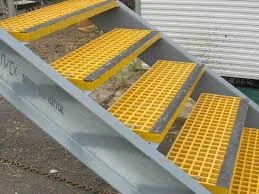
-
 Afrikaans
Afrikaans -
 Albanian
Albanian -
 Amharic
Amharic -
 Arabic
Arabic -
 Armenian
Armenian -
 Azerbaijani
Azerbaijani -
 Basque
Basque -
 Belarusian
Belarusian -
 Bengali
Bengali -
 Bosnian
Bosnian -
 Bulgarian
Bulgarian -
 Catalan
Catalan -
 Cebuano
Cebuano -
 China
China -
 China (Taiwan)
China (Taiwan) -
 Corsican
Corsican -
 Croatian
Croatian -
 Czech
Czech -
 Danish
Danish -
 Dutch
Dutch -
 English
English -
 Esperanto
Esperanto -
 Estonian
Estonian -
 Finnish
Finnish -
 French
French -
 Frisian
Frisian -
 Galician
Galician -
 Georgian
Georgian -
 German
German -
 Greek
Greek -
 Gujarati
Gujarati -
 Haitian Creole
Haitian Creole -
 hausa
hausa -
 hawaiian
hawaiian -
 Hebrew
Hebrew -
 Hindi
Hindi -
 Miao
Miao -
 Hungarian
Hungarian -
 Icelandic
Icelandic -
 igbo
igbo -
 Indonesian
Indonesian -
 irish
irish -
 Italian
Italian -
 Japanese
Japanese -
 Javanese
Javanese -
 Kannada
Kannada -
 kazakh
kazakh -
 Khmer
Khmer -
 Rwandese
Rwandese -
 Korean
Korean -
 Kurdish
Kurdish -
 Kyrgyz
Kyrgyz -
 Lao
Lao -
 Latin
Latin -
 Latvian
Latvian -
 Lithuanian
Lithuanian -
 Luxembourgish
Luxembourgish -
 Macedonian
Macedonian -
 Malgashi
Malgashi -
 Malay
Malay -
 Malayalam
Malayalam -
 Maltese
Maltese -
 Maori
Maori -
 Marathi
Marathi -
 Mongolian
Mongolian -
 Myanmar
Myanmar -
 Nepali
Nepali -
 Norwegian
Norwegian -
 Norwegian
Norwegian -
 Occitan
Occitan -
 Pashto
Pashto -
 Persian
Persian -
 Polish
Polish -
 Portuguese
Portuguese -
 Punjabi
Punjabi -
 Romanian
Romanian -
 Russian
Russian -
 Samoan
Samoan -
 Scottish Gaelic
Scottish Gaelic -
 Serbian
Serbian -
 Sesotho
Sesotho -
 Shona
Shona -
 Sindhi
Sindhi -
 Sinhala
Sinhala -
 Slovak
Slovak -
 Slovenian
Slovenian -
 Somali
Somali -
 Spanish
Spanish -
 Sundanese
Sundanese -
 Swahili
Swahili -
 Swedish
Swedish -
 Tagalog
Tagalog -
 Tajik
Tajik -
 Tamil
Tamil -
 Tatar
Tatar -
 Telugu
Telugu -
 Thai
Thai -
 Turkish
Turkish -
 Turkmen
Turkmen -
 Ukrainian
Ukrainian -
 Urdu
Urdu -
 Uighur
Uighur -
 Uzbek
Uzbek -
 Vietnamese
Vietnamese -
 Welsh
Welsh -
 Bantu
Bantu -
 Yiddish
Yiddish -
 Yoruba
Yoruba -
 Zulu
Zulu
Innovative Design Solutions for Lightweight and Durable Fiberglass Shell Structures
Understanding Fiberglass Shells Versatility and Applications
Fiberglass shells have become a cornerstone in various industries due to their lightweight yet durable properties. Comprised primarily of fine glass fibers and a resin matrix, fiberglass is known for its exceptional strength-to-weight ratio and resistance to corrosion, making it ideal for numerous applications ranging from automotive to aerospace, marine, and even construction.
What is Fiberglass?
Fiberglass is a composite material made from weaving glass fibers and combining them with synthetic resins. This process results in a robust material that is versatile and can be molded into different shapes. The durability of fiberglass comes from the glass fibers, which provide strength, while the resin adds flexibility and helps weather-proof the structure.
Manufacturing Process
The production of fiberglass shells involves several key steps. Initially, the glass fibers are produced, which often include the melting of silica sand with other materials to form glass, followed by drawing the molten glass into fine strands. These strands are then woven or laid out into desired shapes.
Next, a thermosetting resin is applied. This resin is critical as it is what binds the glass fibers together. Once the resin is infused with the fibers, the mixture is placed into a mold, where heat and pressure are applied to cure it. The end result is a solid, lightweight shell that retains the profile of the mold used.
Applications in Various Industries
1. Marine Industry One of the most prominent uses of fiberglass shells is in boat building. Fiberglass boats are favored for their buoyancy and resistance to the elements. The shells are resistant to saltwater corrosion, making them suitable for marine environments. Additionally, they offer better insulation and less maintenance compared to traditional wooden boats.
fiberglass shell

2. Automotive Industry In the automotive sector, fiberglass shells are commonly used in body panels and parts like hoods and fenders. The lightweight nature of fiberglass contributes to improved fuel efficiency. Moreover, fiberglass molds can be easily altered, allowing manufacturers to create custom designs without significant cost.
3. Aerospace Applications Aerospace utilizes fiberglass shells for components that require lightweight materials with high strength, such as cabin interiors and non-structural components in aircraft. The ability to manufacture complex shapes helps minimize weight while ensuring safety and compliance with aviation standards.
4. Construction and Architecture Fiberglass is also gaining traction in construction, where it's used for insulation panels, decorative elements, and even entire building facades. Its resistance to weathering and low maintenance needs make it an attractive option for long-lasting architectural features.
5. Recreational Vehicles In the RV and camper industry, fiberglass shells provide lightweight and durable exteriors. They help in improving fuel efficiency and reducing wear and tear on the vehicles, which translates to long-term savings for users.
Advantages of Fiberglass Shells
Fiberglass technology presents several advantages
- Durability It is resistant to environmental damage, such as moisture, UV radiation, and chemical exposure, ensuring longevity. - Lightweight This characteristic helps reduce the overall weight of products, enhancing efficiency and performance. - Cost-Effective While initial manufacturing may seem expensive, the durability and low maintenance needs of fiberglass products can lead to cost savings over time. - Versatility Fiberglass can be molded into virtually any shape, allowing for innovative designs and applications across a range of industries.
Conclusion
Fiberglass shells represent a significant advancement in materials technology. Their application spans various sectors, driven by the need for lightweight, durable, and cost-effective solutions. With ongoing innovations in fiberglass formulation and manufacturing processes, the future looks promising for this versatile material. As industries continue to strive for greater efficiency and sustainability, fiberglass shells will likely play an increasingly crucial role in meeting these demands.









